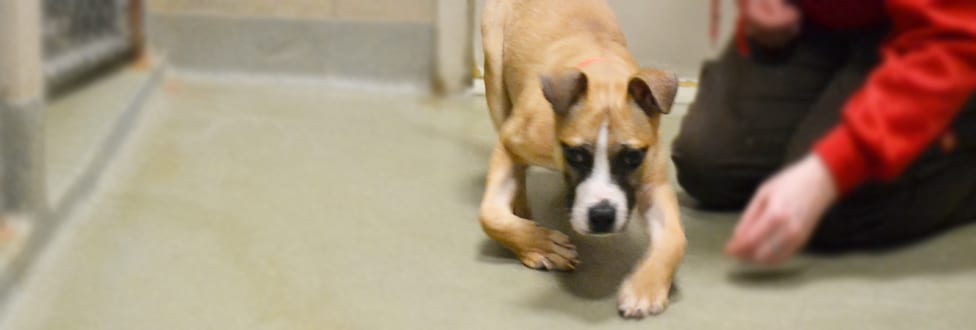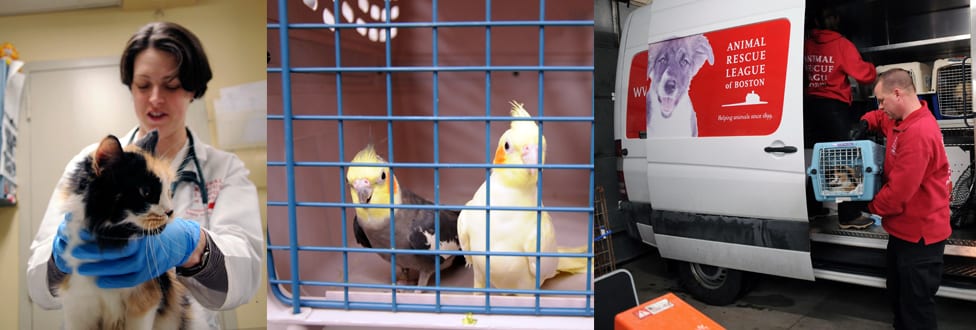Meet Rugby!
A real miracle puppy ready to find a new home
“Rugby’s story highlights all the wonderful people in the ARL network who are dedicated to helping neglected animals.”
– Dr. Edward Schettino, Director of Veterinary Medical Services, ARL
When we first met Rugby back in April, he could have been the poster child for our “See Something, Say Something: Report Animal Cruelty,” campaign running that month.
At the time, he was 4 1/2 months old and had been cruelly abandoned in the middle of the road in Fitchburg, Massachusetts. His front legs were severely twisted at the wrists, so Rugby could only get around by doing a haphazard crawl. Thankfully, someone reported spotting Rugby inching his way along the road where he’d been left, and Lt. Alan Borgal, director of the ARL’s Center for Animal Protection, brought him to the ARL’s Boston Shelter.
When Dr. Edward Schettino, the ARL’s director of veterinary medical services, examined Rugby at the shelter, he observed the spirited young dog was very underweight. Dr. Schettino concluded the condition of Rugby’s front legs was probably due to poor nutrition and long-term confinement to a very small crate. After reviewing x-rays of Rugby’s front legs with his colleagues, Dr. Schettino preliminarily diagnosed Rugby with bilateral carpal laxity syndrome, a condition that could require surgery or could also respond to a diet of well-balanced adult dog-food and a program of rigorous exercise.
Rigorous exercise seemed to be the best course of treatment for Rugby! A rambunctious dog, Rugby already had ARL behaviorists, staff, and trained volunteers working with him to help him channel his energies into playing with other dogs and chew toys.
And getting him moving helped on the medical and behavioral front indeed!
Within a few weeks, Rugby’s front legs were improving. The ARL collaborated on his treatment with colleagues at the ARL and Tufts University Cummings School of Veterinary Medicine. To increase strength in his legs, Rugby began underwater treadmill therapy twice a week, under the supervision of the ARL’s Dr. Alett Mekler and the physical therapists at Animotion in Stoughton, Massachusetts, who donated their time and services.
In just under three months, Rugby has come incredibly far in his rehabilitation. He is moving well on his front legs and his sweet, playful personality makes everyone at the shelter smile–even when he’s a bit of a handful (written with love and a smile, of course).
Thanks to the collaborative effort of our Center for Animal Protection, shelter veterinarians, dog behaviorists, shelter staff, volunteers, Tufts University Cummings School, and Animotion, this miracle puppy is now ready for a new home!
According to shelter staff, an experienced dog owner preferably with another dog would be the best situation for Rugby–the guy really needs a playmate to keep him on his toes and moving! He’s still working on his jumpy/mouthy behavior, so an active household with older children would be more suited to his big personality and energy-level.








 Here is a selection from Lt. Borgal’s profile in the book: “Lieutenant Alan Borgal began working at the
Here is a selection from Lt. Borgal’s profile in the book: “Lieutenant Alan Borgal began working at the 
 1. Food Puzzle Egg Carton
1. Food Puzzle Egg Carton 2. Cardboard Castle
2. Cardboard Castle






